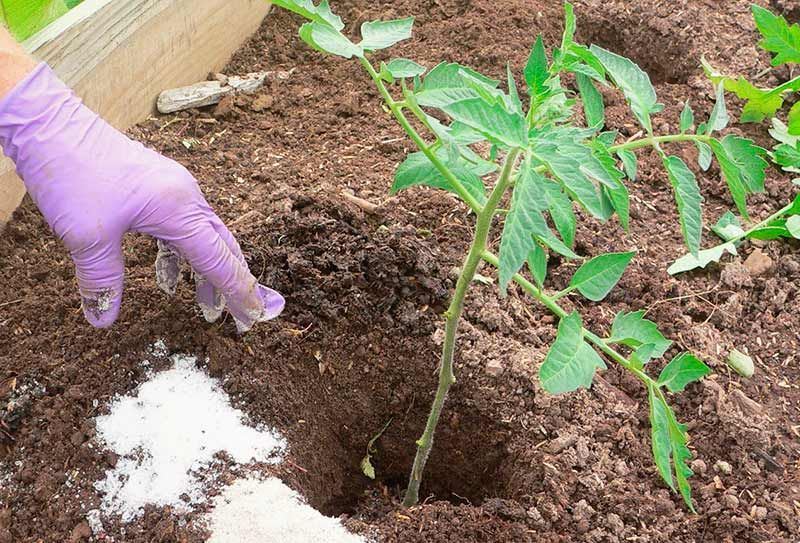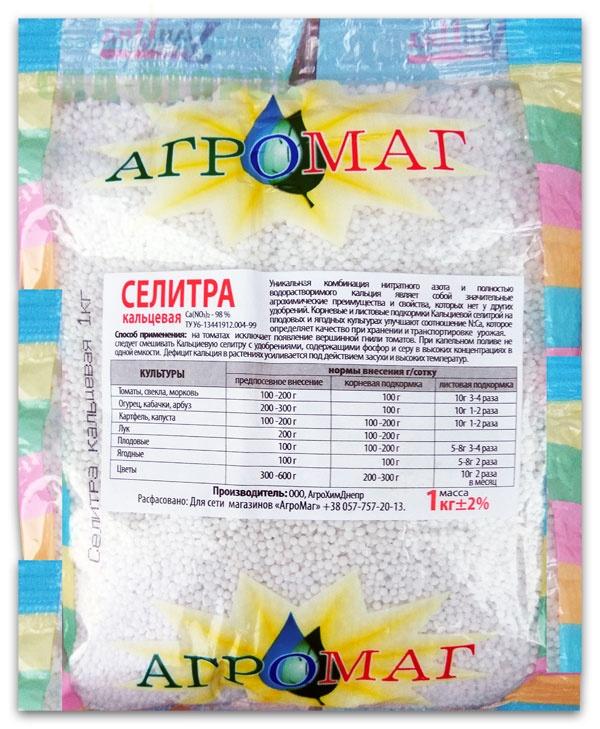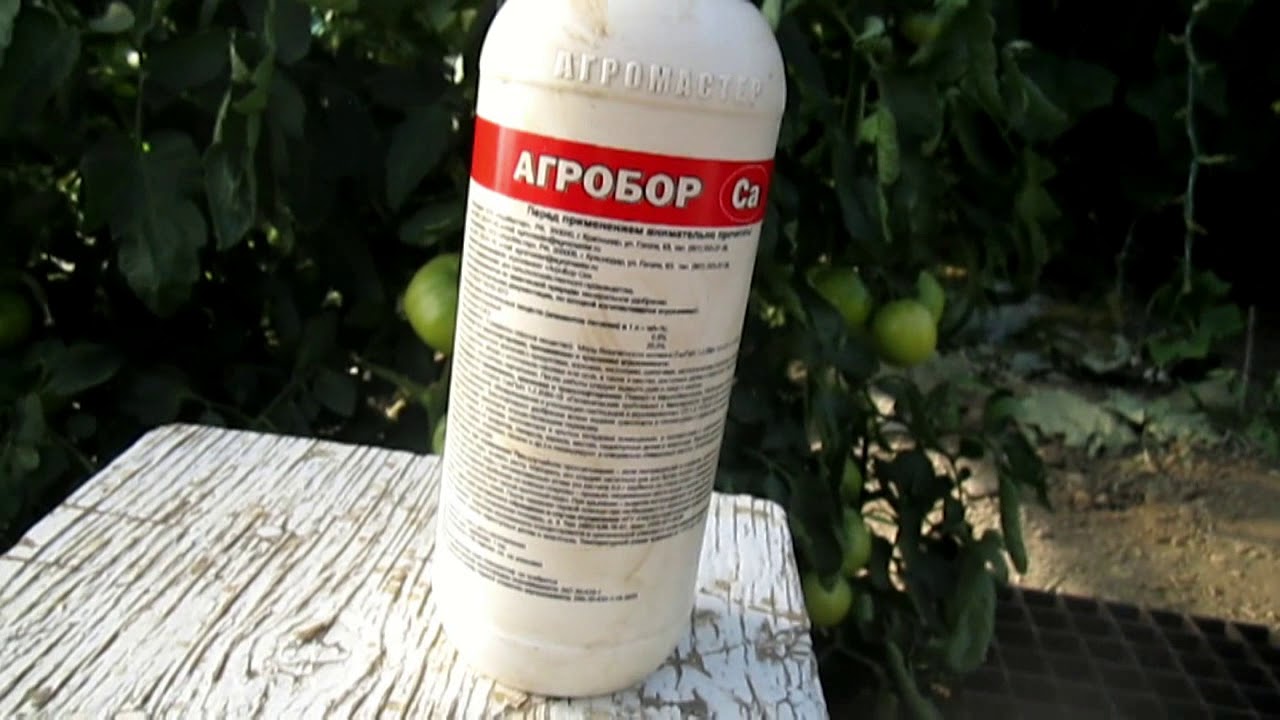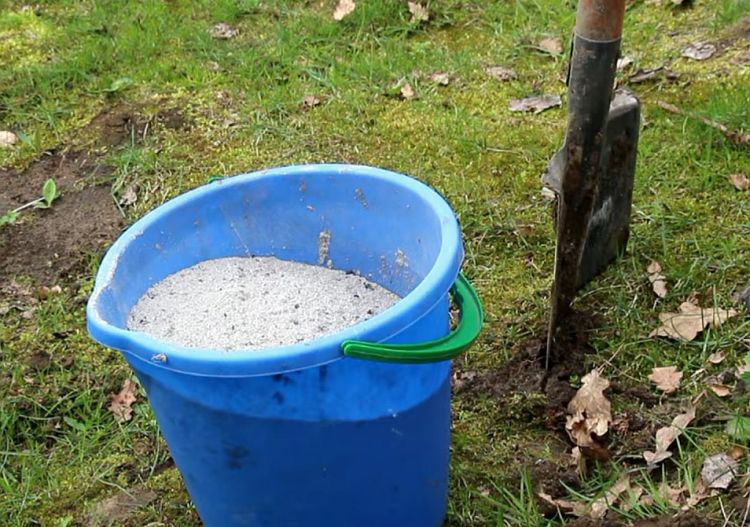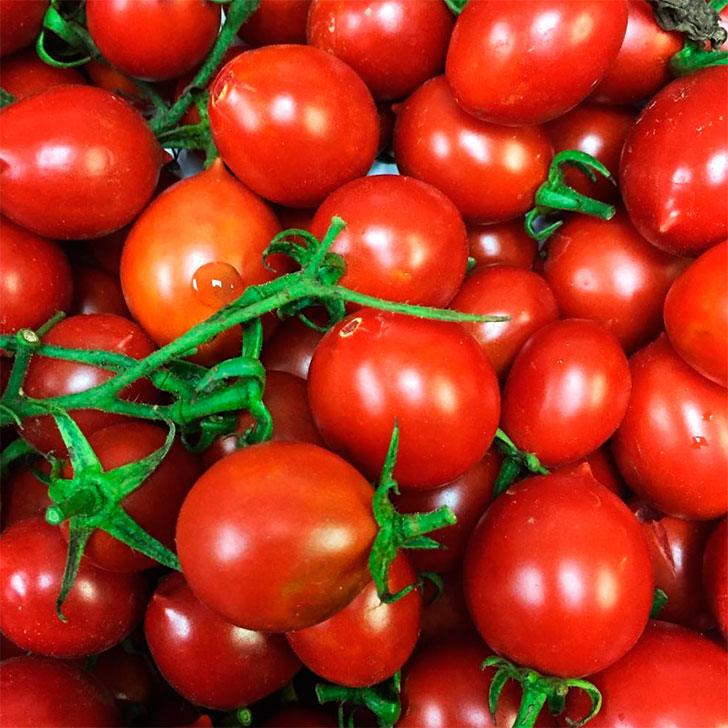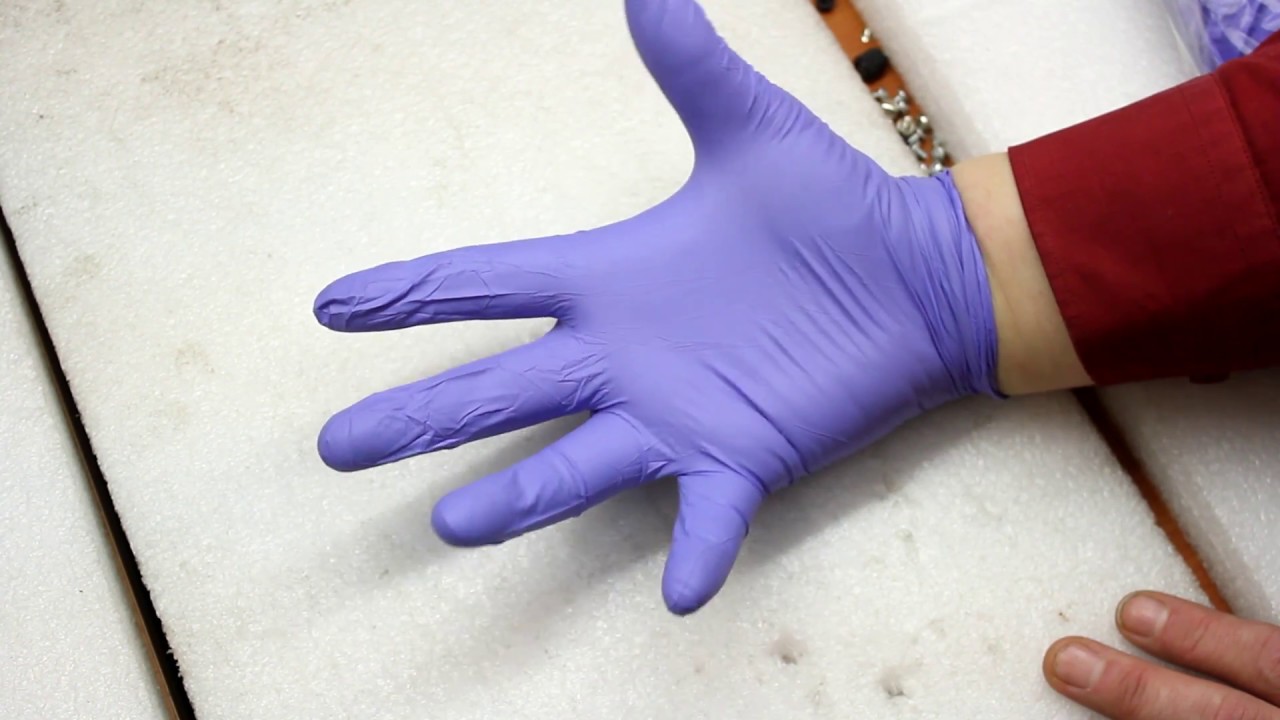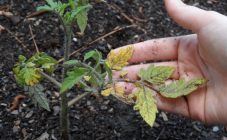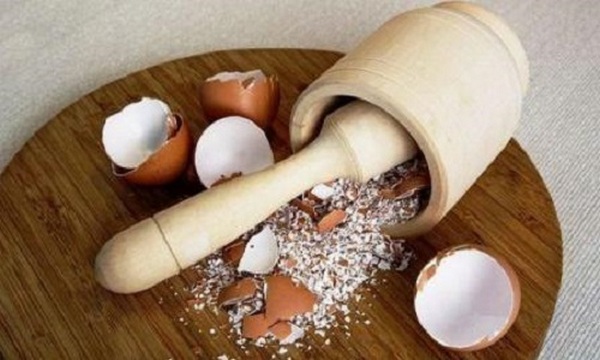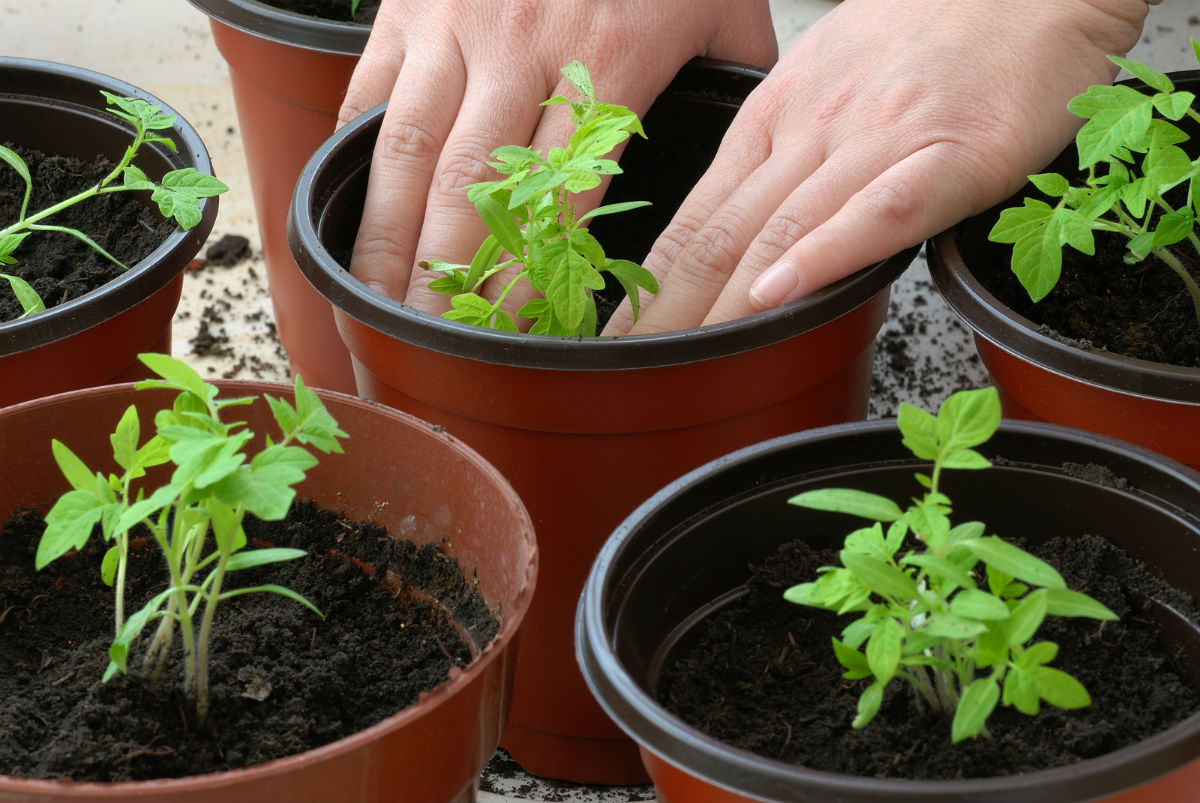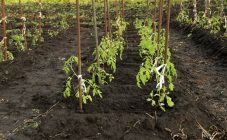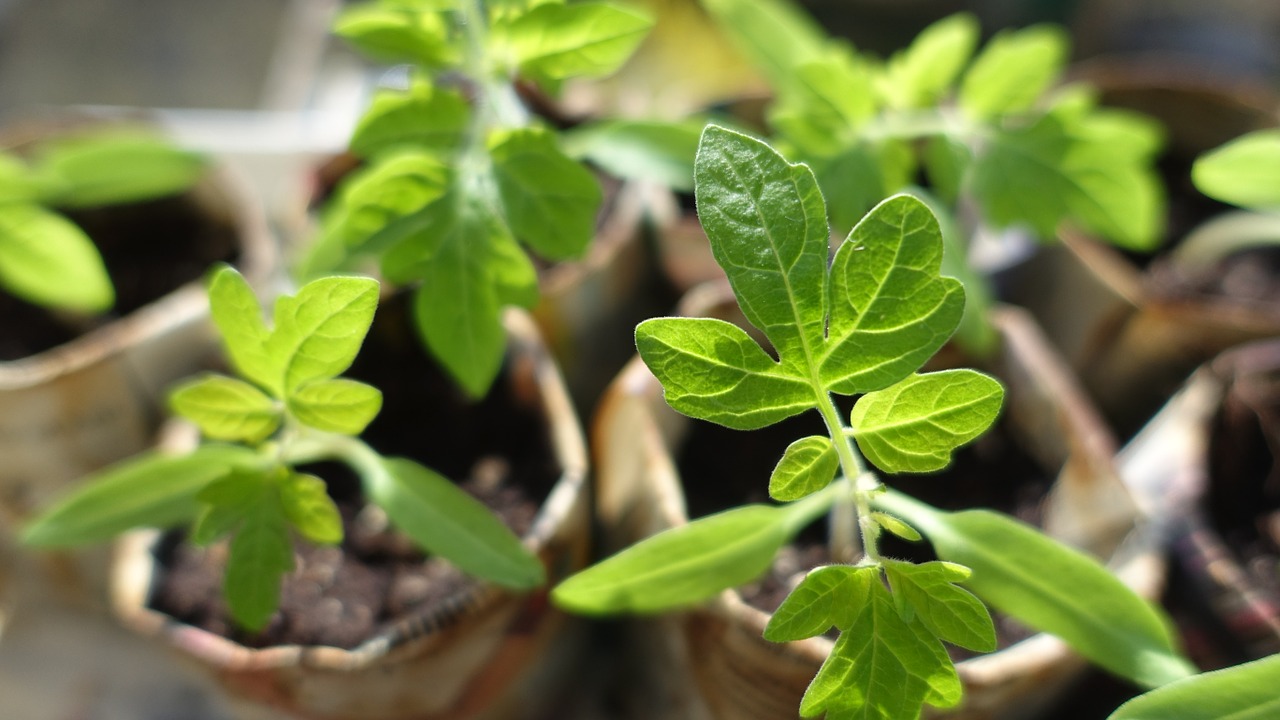Content:
Any plant requires trace elements during the growing season, which are involved in the process of pollination and photosynthesis. This also applies to tomatoes. Vegetable growers feed the plants with fertilizers to get a good harvest. Tomato saltpeter is fine, but it is important to know how to use it in order to feast on delicious fruits at the height of the summer season.
Calcium nitrate
Salpeter characteristic features: availability, production in large volumes. It is widely used in the agricultural sector for plant feeding.
Calcium nitrate, in another way calcium nitrate, refers to fertilizers. The substance dissolved in a liquid is released in granular and crystallized form. Fertilizer is a mineral based on nitric acid salts. Saltpeter is divided into:
- calcium and sodium;
- ammonia and barium;
- potash.
The latter type of saltpeter is not used by farmers.
When fertilizing flowers, vegetables, trees, it is required to adhere to the dosage and terms of use. This will allow you to avoid the concentration of the substance in berries and fruits, crops, to protect against the negative effect of the mineral.
Tomatoes are fed with potash and ammonium nitrate at home, focusing on the importance of the drug for crop growth, as well as fruiting.
Not all gardeners are aware of the role of calcium in tomato cultivation. It promotes better assimilation of the elements that are contained in the soil. Without calcium, fertilization of tomatoes does not make sense due to a violation of the delivery and assimilation of trace elements.
Calcium nitrate, or calcium nitrate, contains 19% calcium and 13% nitrogen. It is used for feeding vegetables during the growing season: from germination to harvesting. Odorless. Failure to comply with the storage rules leads to rapid caking. In humid conditions, calcium nitrate is hygroscopic. Does not acidify the ground. If used to fertilize tomato bushes, any type of soil is suitable.
Calcium nitrate advantages:
- stimulation and strengthening of the root system, increasing immunity to various diseases that are generated by bacteria;
- resistance to temperature changes and unfavorable weather conditions (heat, cold);
- help in the formation of cell membranes and walls.
In addition, calcium nitrate:
- participates in metabolic processes, encourages the work of enzymes, activates cultures during germination;
- responsible for accelerating photosynthesis, delivery of carbohydrates and has a beneficial effect on nitrogen assimilation;
- increases yield by 15%, promotes keeping quality of fruits, gives the fruits an appetizing appearance and excellent taste.
A significant minus of calcium nitrate – harmful effect of fertilizer on roots or foliage tomatoth seedling. This happens when a useful complex is used incorrectly and inappropriately. If you follow the instructions for use, difficulties can be avoided.
Introduction
In accordance with the instructions, spring is most suitable for using nitrate. The right time is to dig the earth. Fertilizer is optimally suited for application before sowing - plants need nitrogen at the initial stage of development, only thanks to calcium it is absorbed.
Calcium nitrate has found application for tomatoes, primarily at the beginning of the growing season as a foliar preparation. In the autumn season, fertilization is not advised - nitrogen is washed out during snow melting, the inability to assimilate calcium.
Emphasis is placed on spraying tomato plantings before flowering. It is important to dilute the product correctly. The ideal time for processing plants comes 7 days after planting the bushes in open beds.
On the site for tomatoes with high acidity, granulated nitrate is poured into a hole when planting a bush: 1 tsp is added to 1 culture.
In order not to harm the tomatoes, you will need to properly water the seedlings. Each phase of the development of tomato plantations has distinctive features of the application of top dressing.
Often, calcium for tomatoes will help out as a top dressing in private backyards. In special stores, you can buy it in sealed packaging, weighing 1 or 2 kg. According to the manual, it is forbidden to combine the product with mineral mixtures that include phosphorus, as well as sulfur.
Calcium nitrate belongs to the universal mineral fertilizers, it is used for all crops. They are applied under the roots, dissolved in water, by drip irrigation or by spraying crops. Suitable for greenhouses, at home, hydroponic plant cultivation. For plants, root feed is recommended:
- flowers - for 10 liters of water 25 g (interval - 14 days before flowering);
- vegetables: tomatoes and potatoes, cucumbers and cabbage, carrots - 10-15 liters per 25 g (interval - 10-14 days);
- berries - 8-15 liters per 25 g (1-2 times before flowering);
- fruit trees - 10 liters per 25 g (before the beginning of the growing season, in March-April).
A foliar dressing is prepared at the rate of 1-1.5 liters of 25 g and is applied as follows:
- decorative bushes and berries - up to 2 liters per plant;
- fruit trees and seedlings - 3-8 liters per crop, depending on the size of the seedling;
- flowers and vegetables - 1-1.5 liters per 1 hundred square meters of land.
Saltpeter for seedlings
It will be necessary to feed the sprouts with calcium and nitrogen to get good tomato seedlings. The first element stimulates the germination of seed, the second develops the root system. It is undesirable to combine calcium nitrate with superphosphate, as well as with dressings that contain phosphorus and sulfur.
Every summer resident tries to get a generous harvest. However, it is worth making an effort to get things done. In this case, we mean feeding the site with saltpeter, which promotes the development of roots, shoots and the protection of tomato bushes from harmful insects and diseases.
Compliance with the requirements for use. Non-toxic the substance can damage tomatoes and human health if it is used incorrectly or out of time. Top dressing saltpeter, after fruit setting, accumulates harmful nitrates. Violation of the dose of the agent causes burns on the foliage. Attention and vigilance are needed when using nitrate.
Just right for tomato plantings, calcium fertilizing. The formation of the first three leaves signals the introduction of recharge. For the solution, you will need 5 liters of liquid, where ash (50 g), calcium nitrate (10 g), carbamide (5 g) are mixed. The mixture is carefully watered over the roots. Avoid getting on the leaves so as not to burn them.
Planting in a greenhouse
At this stage, the delivery of nutrients to vegetables is carried out by a sprinkling method. Growing tomatoes in a greenhouse is accompanied by nitrogen-containing fertilizing after crop adaptation until flowering.
The use of a solution of nitrate (1%) relieves tomato plantings from:
- top rot;
- ticks;
- thrips;
- slugs.
The medicinal mixture is prepared from 10 liters of water, in which 100 g of saltpeter is dissolved. It strengthens the immune system, protecting bushes and fruits after the spraying is stopped.
A spray bottle is appropriate for spraying liquid over a tomato bush. Foliar feeding is carried out before watering, 10 days after planting plants in a closed ground. The procedure is repeated after 14 days during the first half of the growing season.
Fruiting phase
Saltpeter is required to form a high quality ovary. A bucket of water is prepared for the mixture, in which half a liter of chicken manure is diluted, calcium nitrate (20 g) is mixed. The addition of nitrophoska is possible.
Saltpeter, which is applied as fertilizer during flowering and fruit setting, in addition improves the quality of dense soil layers, simplifies the supply of oxygen to the roots. The nitrogen in the top dressing is responsible for regulating the growth of the bushes. They say about nitrogen hunger:
- thinned leaves;
- shedding of flower buds;
- weak fruit ovary and small size;
- the acquisition of a reddish color.
Adding 10 g of calcium nitrate to 10 liters of liquid will correct the situation. For 1 plant, add 500 ml of solution under the root. Watering tomatoes is combined with fertilizer, which effectively affects the delivery of nutrients to the set fruits. Timely nitrogen supply allows tomatoes to preserve fresh and whole fruit.
The main requirement for amine feeding of tomato bushes: it is impossible to change mineral feeding during the entire growing season. 1 complex composition of minerals is selected and used in conjunction with an organic one according to a specific scheme. Tomato plantings respond to feeding. However, it is more useful not to supplement the tomatoes. Excessive zeal is fraught with increased growth of greenery, cracked fruits. Only compliance with the recommended measures affects the receipt of a high yield.
Security measures
Calcium nitrate for tomatoes belongs to non-toxic agents, it is safe for humans. If tomatoes are fed, they are not afraid of allergies. According to the classification, it is ranked among the 4th group of substances that are of little hazard to humans and the environment.
It is recommended to follow generally established safety measures when using calcium nitrate. Enough rubber gloves to protect your hands. Although their absence and contact with the granules will not cause much harm. However, it is more reliable to reassure and dilute crystals with gloves.
Store saltpeter in a hermetically sealed container, away from:
- heating system;
- highly flammable materials;
- alkalis.
Compatibility with other products
Mixing calcium nitrate with:
- manure and straw;
- phosphates and chalk;
- sawdust and dolomite;
- lime.
The mixture provokes self-ignition. Together with a solution of nitrate, it is possible to use ash and urea. The substances combine perfectly and help to improve the performance when feeding tomato plantations. Potassium nitrate application for tomatoes is carried out separately. Potassium nitrate is applied to the tomato plot to mineralize the soil.
Every gardener strives to achieve a good harvest. Ammonium nitrate for tomatoes will make the task easier. Fertilize the beds for tomato seedlings with ammonium nitrate, and also protect against parasites and phyto-diseases.
Fertilization with calcium nitrate is a must for tomato plantings that grow in a changing climate. Nourishing tomato seedlings can solve many agricultural problems.
